Andy Trivett bikes to work every day, 19 km round trip.
Good on him: by doing this, and by being vocal about it, Andy prompts us to consider doing the same thing ourselves.
(That said, my commute to work is 25x shorter than Andy’s is).
All of the photos I take with my phone get automatically backed up to Google Photos, and occasionally Google will, of its own volition, decide to experiment with them and offer the result up to me under the “Assistant” tab. Here’s one such experiment from a few weeks ago, an automatically-generated panorama of Founders Hall:

The photos that Google’s AI robots used to create this pano are these two:
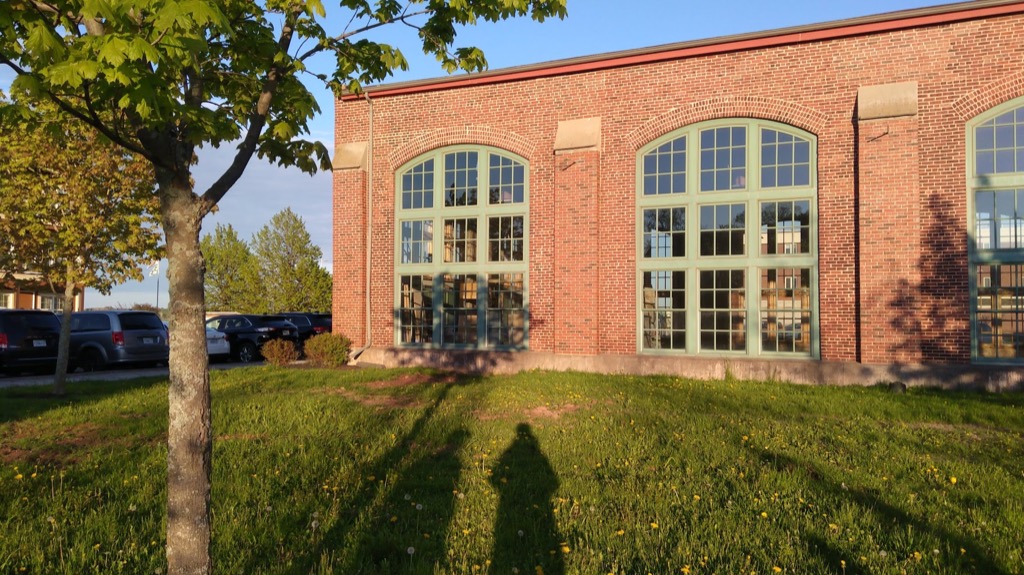
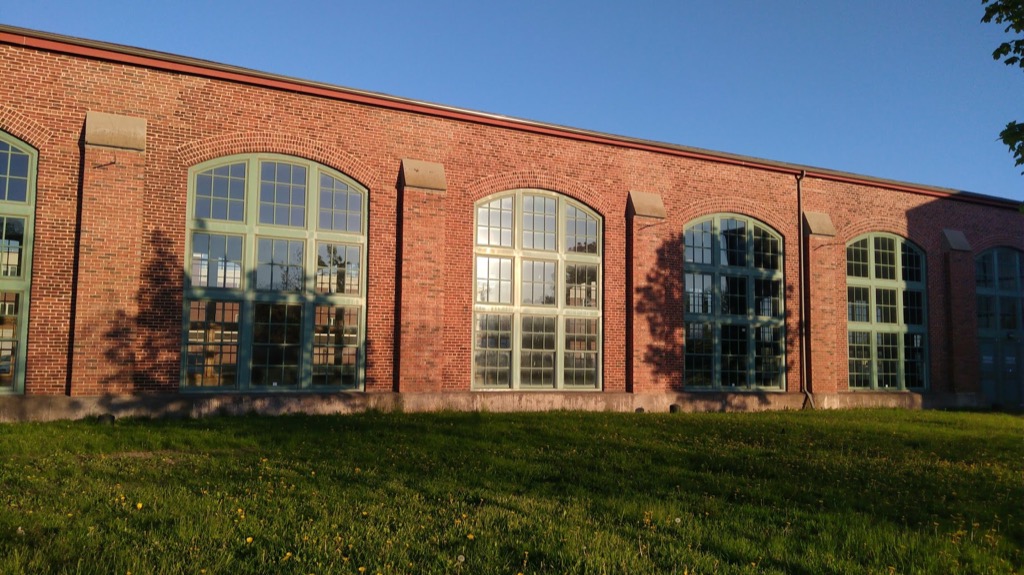
I remember back in the early days of panoramic photography, when Apple released the QuickTake camera and the Quicktime VR set of tools: making panoramic photos was a dark art that seldom produced satisfying results. Now the machines do it on their own.
It seems we are not content with disassembling Province House, but must also disassemble its temporary replacement too: those ratty concrete steps at the Coles Building are finally getting the complete purge after many seasons of temporary bodge jobs.

Many years ago, when Oliver was very little, his paediatrician asked Catherine and me what our parenting strategy was.
The question caught us unawares: we’re supposed to have a strategy?!, we wordlessly said to each other. We’d assumed that everything would just figure itself out.
And it did. Until it didn’t.
Last fall was the most challenging time of our parenting lives, and the months from August to December remain something of a blur.
Life was out of balance. We were out of balance. Routines were out of whack. Oliver was under constant duress, and so we were too. More than once I remember driving home from the school run with tears in my eyes. Morning and bedtime routines were full of turmoil. I developed a Pavlovian response to midday text messages from the school.
But we found our way back. Together. And with help.
Oliver played a huge role in this, learning brand new ways of communicating his needs (when your son tells you that you “need to be less tyrannical,” that’s a helpful stage direction).
Johannes and Lauren and Mackenzie and Drake, who’ve worked with Oliver after school and on Sundays, played a huge role in this, enabling him to become more independent and social.
The staff at Colonel Gray High School—Shelly and Dave and Maritza and Jill—played a huge role in this, bending and twisting and improvising to find a way forward that would work for Oliver. Like agreeing to go for a walk with him every morning before going into the school to give him an emotional air lock. And moving his lunch time earlier to a less chaotic time in the cafeteria. And agreeing to allow him to research local food policies as part of his curriculum.
After an exhausting, soul-stretching Christmas trip to Ontario, we realised that, though we’d made gains, we needed help. So we made an appointment with the selfsame paediatrician—he’s been with us since the delivery room—and told him as much.
He sprang into action, and within a few days, we had a referral to the Richmond Mental Health Centre, and a suggestion that we enrol in the Strongest Families telemedicine program, designed to help teens experiencing worry and anxiety, and their families.
By mid-February we were having a weekly call with a coach, filling out a worry tracker every night, practising belly breathing, muscle relaxation and positive thinking, and role playing bold new scenarios for handling worrying situations. We had our last of the 10 weekly calls last week, and the effect on our mental health has been transformational: our family is, indeed, stronger.
Things going all koyaanisqatsi on us wasn’t only about Oliver and high school and teenagerhood and autism, it was also about our role as parents. We actually did need a parenting strategy, and the one that evolved bore a striking resemblance to the Collaborative and Proactive Solutions model promulgated by Dr Ross Greene, who we had the pleasure of spending a daylong workshop with in April.
Distilled to its essence it is this: Oliver is how Oliver is. Whether you call that autism or not is immaterial and, regardless, incomplete. Looking at Oliver’s unique strengths and challenges, and then working with him to develop solutions, strategies and route-arounds works much, much better than yelling louder or with more conviction.
If you’ve got a kid who isn’t going to be settled until he’s read every single Facebook notification before he heads off to bed, giving him an extra 5 minutes to do this might just be the right answer. In our case, it meant the difference between a happy, peaceful bedtime routine and a disastrous all-consuming one that could echo stress well into the night.
And so I am less tyrannical. I’m not walking on parenting tenterhooks, but I am more empathetic, more flexible, more recognising of how subtle changes in approach can have remarkably positive effects on which way a situation goes.
And so in the morning I spend 15 minutes helping Oliver greet the day rather than repeatedly pleading that he get up. And we get to school when we get to school.
In the evening he takes the time he needs to check Phil Ferraro’s Facebook updates. And Katlin’s. And Ton’s. And then we shut the laptop and go upstairs to bed. I’ve had to develop a sixth sense to know when that time is. Sometimes I get it wrong. But mostly I don’t.
When we go upstairs, I turn on Oliver’s podcasts, we work together on the crossword puzzle I made up earlier in the evening (another sort of mental air lock), and then I say goodnight.
Which is how it’s 9:30 p.m. as I type this and Oliver is happily asleep upstairs (or at least happily listening to 99% Invisible).
I don’t dread the morning routine that will come tomorrow. Nor does Oliver.
He’ll have a fine day at school.
I’ve talked to Oliver about writing a book about the last 10 months, and proposed the title “A Very Hard Year, and How It Got Better.” Oliver suggested “Got A Little Better” might be more appropriate, for life still has its challenges, as it always will. But we’re more confident, all three of us, that we can face those challenges now, and if you’d told me that 6 months ago I never would have believed you.
Tomorrow’s the last day of grade 10 for Oliver. He took his EAs out to lunch today to celebrate. He’s looking forward to grade 11 in the fall, and to two and a half months of summer vacation before then. He was worried tonight about the party they’ll be having tomorrow afternoon to celebrate the end of school, and how they’ll be serving pop to drink, which he doesn’t like. So we decided to send him to school with some iced tea. Crisis averted.
Goodnight Moon.
It’s (finally) a warm spring day, and so I enjoy a cup of tea on the patio at Receiver Coffee and sketch the view south. I feel like I saw the tree.
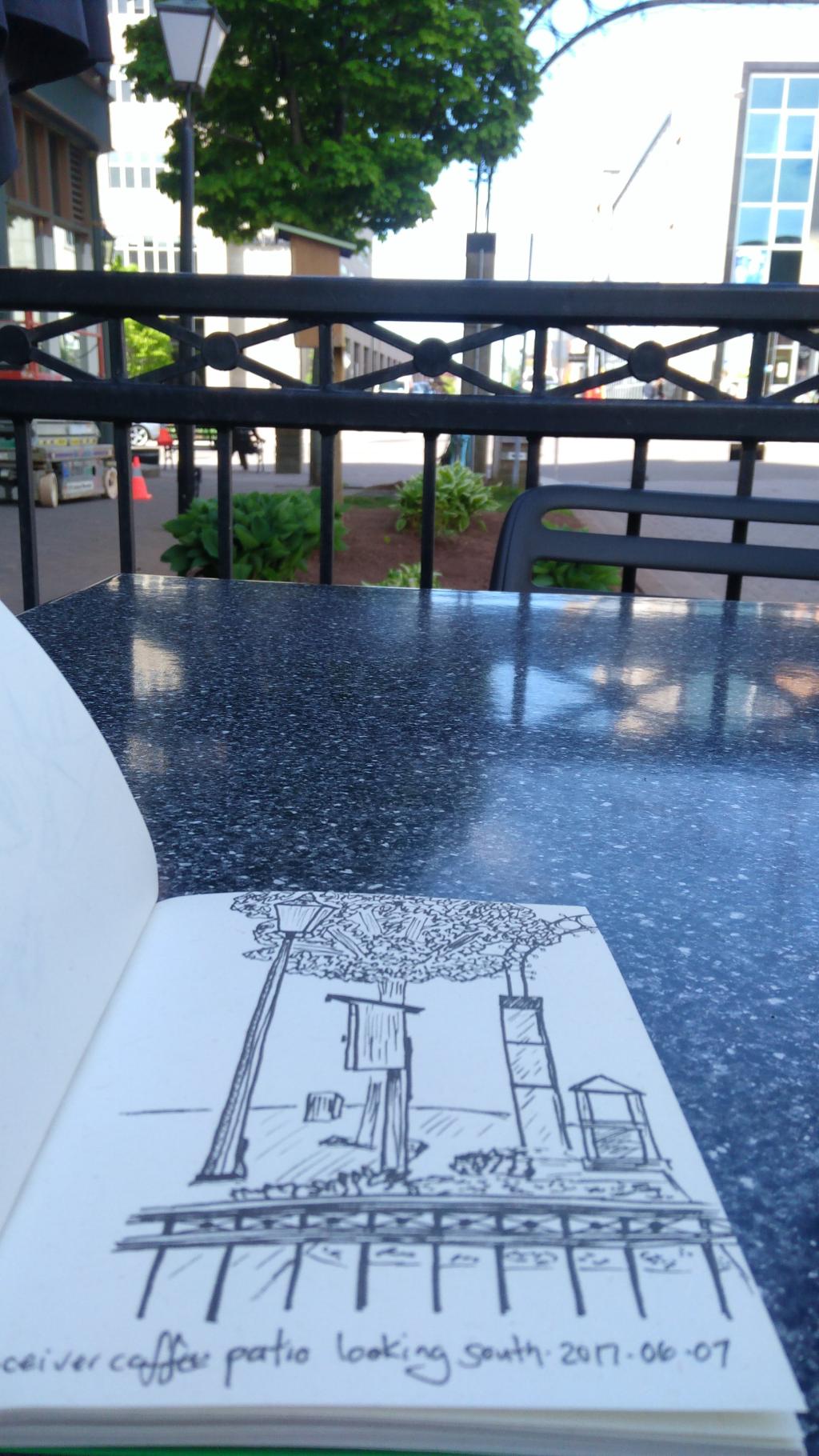
The polling firm CRA released its latest survey of Prince Edward Island voters today, and both the CBC (P.E.I. Liberal support slumps again in CRA poll) and The Guardian (P.E.I. Liberals take 10 point dive in latest poll) ran stories highlighting the decrease in support for the governing Liberals and their Premier Wade MacLauchlan. In both cases, they use what might be charitably called “pained” photos of the Premier to illustrate the stories:
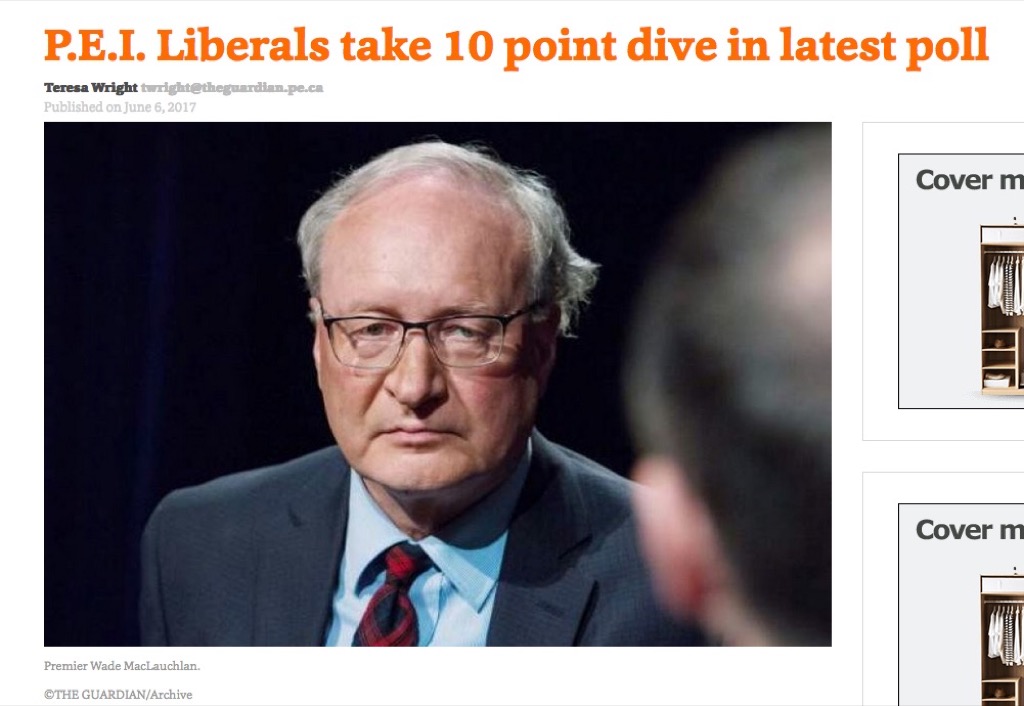

Earlier in the week I learned about an interesting Mozilla Learning project called Hack the News and the X-Ray Goggles bookmarklet that powers it, which allow one to learn about the web by remixing the web. I used this opportunity to explore how the photos that the media used to illustrate their stories have their own politics.
So I found a decidedly less-pained-looking photo of the Premier in the Huffington Post, and dropped it into the CBC and Guardian stories about the CRA poll to get a sense of whether a happier photo changed the way I interpreted the story:


I don’t know about you, but for me the change is palpable: the original stories become stressful to look at by comparison.
I’m not suggesting that the happy-Premier photo is a better choice to illustrate these stories–it’s as dishonest as the photos that were used.
In neither the CBC’s case nor The Guardian’s was the photo used an actual photo of the Premier actually reacting to the actual results of the poll: both are “file photos” and, as such, represent a variant of the same danger represented by using stock photography to illustrate stories that I’ve written about before.
Photography in news stories should be used to enhance the journalism, and, as such, it’s important that photos used bear some relationship to the subject matter of the story; in today’s stories the CBC used a photo taken two weeks ago and The Guardian used a file photo that’s been used as far back as 2015.
I’ve no doubt that the Premier isn’t cracking open Champagne about today’s poll results, but I don’t know that for a fact; that the photographs used in these stories suggest an emotion, where the reporting doesn’t, is wrong, and they should be removed.
Oliver and I have been having a running dialogue about the impending opening of Giant Tiger in Charlottetown, a dialogue in which I continue to maintain that the store will sell giant tigers and Oliver maintains that it will not.
This dialogue let to a discussion of a photo I took when Oliver was 6 years old in front of a Giant Tiger store in Napanee. I popped open my Flickr and searched for “giant tiger” and, blamo, there was the photo.
I think you’ll agree with me that a store with a sign like that surely must be in the big cat business.

It is a testament to how well I know Catherine that I knew exactly what Frozen Bed Stools on the shopping list meant.
(Oliver noticed that when you do a Google image search for the keyword, it shows you Frozen-branded bedroom accessories, which perhaps explains why Alexa allowed this in the first place).
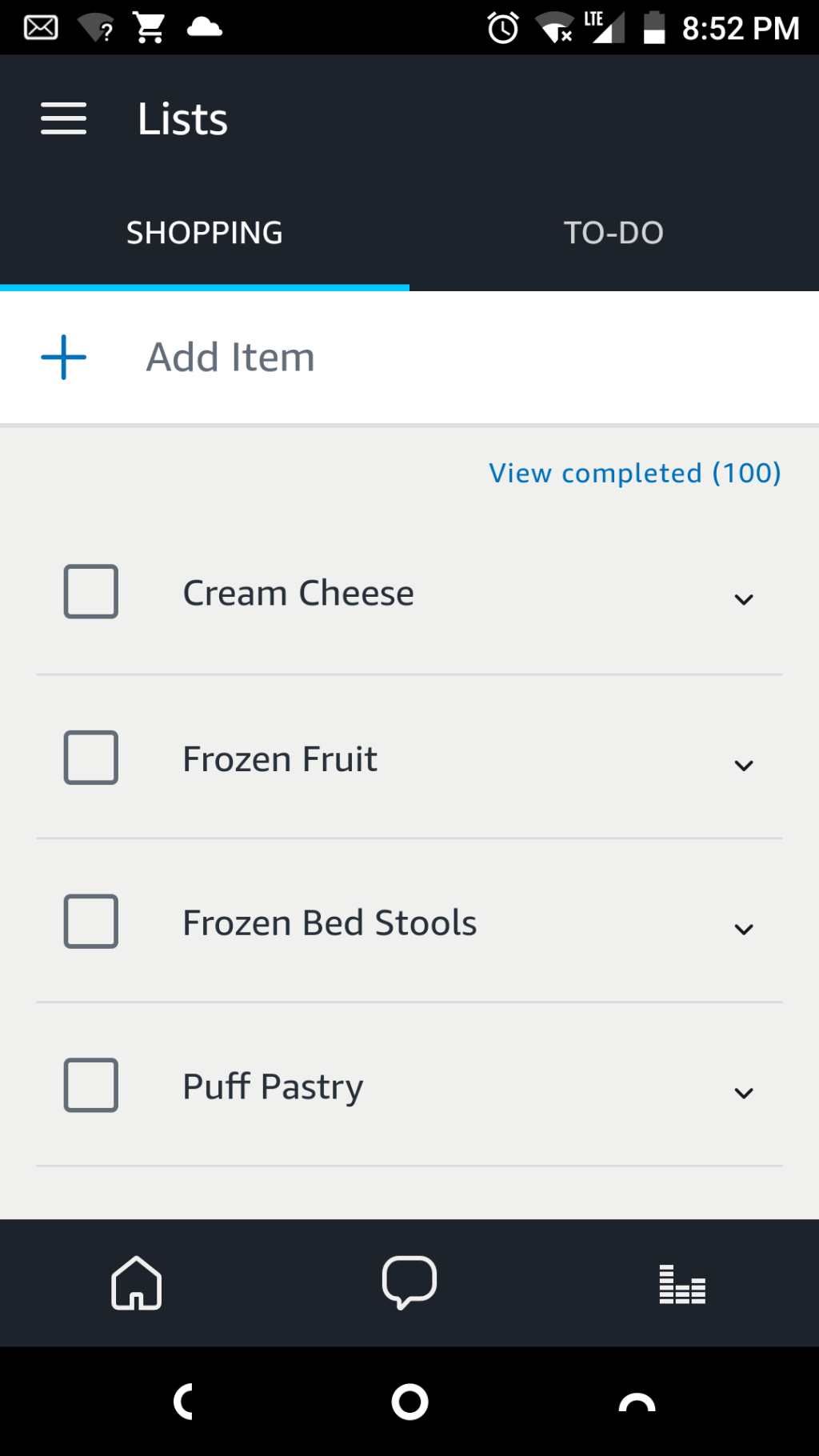
Four years ago I wrote about how one of the buses in Charlottetown had been outfitted with a bicycle rack on the front:
The fleet of Charlottetown Transit is a patchwork quilt of ye olde trolley buses, castoffs from other transit companies (complete with signage in Spanish!) and, inexplicably, a thoroughly modern, comfortable bus kitted out with all the latest conveniences, including a “cowcatcher” bicycle holder on the front.
While this was a great development, it was hobbled by the fact that it was only one bus of many, and so couldn’t be relied upon as a component of a truly “inter-modal” personal transportation strategy (“bus out to the mall, bike back”).
Today, however, we’ve leveled-up: bike racks are now on all of the buses, a press release tells us:
T3 Transit, in coordination with the Town of Stratford, the City of Charlottetown, and the Town of Cornwall, is pleased to announce the installation of bike racks on 11 local buses within the three municipalities.
As an aid to adoption, T3 Transit has produced this helpful video guide, hosted by transit’s own Mike Cassidy.
Bravo!
I’ve become interested in annotated travel maps, inspired in part by Danny Gregory’s An Illustrated Journey, so I tried my hand at one.

 I am
I am